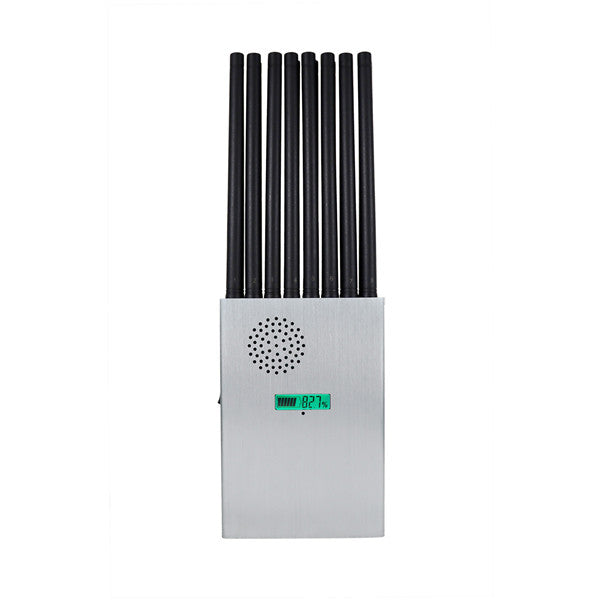How do wireless signal jammers dissipate heat?
Wifi jammers are high-power and high-current devices that generate heat when working. If the heat is not dissipated in time, it will affect the normal operation of the machine and seriously endanger personal safety. Most similar or other power device electronic products will attach great importance to the heat transfer performance of the machine.
How to solve the heat dissipation problem of wireless signal jammer?

Among commonly used metal materials, silver has the highest thermal conductivity j, followed by copper and aluminum. However, silver sheets are expensive and rarely used for heat dissipation; although copper has good thermal conductivity, it does not dissipate heat well. This will cause the mobile phone signal screen to work 24 hours a day, and the machine will not dissipate heat smoothly, forming an invisible heat source in a certain small space. . If you encounter high temperature weather in summer, the dangers can be imagined.
In comparison, aluminum is more ideal. It is light, strong, has good thermal conductivity and fast heat dissipation. Good CPU air-cooled radiators are all made of aluminum alloy.
Therefore, the signal jammer for wifi casing is made of cast aluminum material + copper strips for rapid heat conduction, and rapid heat dissipation through aluminum sheets, so that the machine has sufficient heat dissipation area.
In addition, the power contact surface that easily generates heat is designed with thickened copper. The copper strip can quickly absorb heat and then accelerate the heat absorption through the aluminum alloy. After heat transfer, the heat has long disappeared after contact with the air.
Internally, the principle of air convection is fully utilized. Automatically measures temperature and starts the fan through the thermistor. If the heat is low, the wind speed will be slow, and if the heat is high, the wind speed will be fast. The heat generated by the operation of the internal combustion engine is blown to the outside, and the surrounding low-temperature air is re-injected into the internal combustion engine to form convection and exert a circulation effect. Internal and external combine to form ideal heat dissipation.













